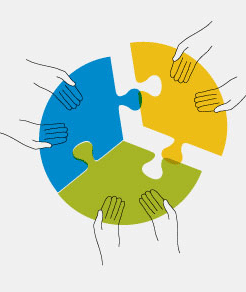Scale Deep is framed in many questions but the one that resonates the most is ‘what can we do together that we can’t do alone?’
I’m particularly interested in this question because I’ve had the opportunity to work with many people involved with many worthy causes. Specifically, I’ve had experience understanding the perspectives of grant-seekers and grantmakers having either written, reviewed and/or reported on over 2,500 proposals.
That is a lot of spreadsheets, business plans, theory of change models, developmental evaluation methodologies, to name a few. Some requests are small, a request for just a few thousand dollars to test an idea. Other requests have been larger, multi-year collaboratives with mega-budgets.
In over 500 conversations that I’ve had about grantmaking, not one person is satisfied about how we prepare, administer and report against impact.
Grant-seekers are frustrated because of how long it takes a grantmaker to decide, or how much information they ask for, or for not providing reasons for why they were turned down. Grantmakers are frustrated because grant-seekers are not always clear about their goals, are often duplicating the work of another organization or fail to report on time.
Past attempts have tried to bring all stakeholders into a room and develop a common platform with common metrics that everyone can agree upon. There have been several attempts showing some signs of success but were not able to reach scale.
So other questions arise.
Why did traditional approaches to information-sharing not stick? What was missed in the design? Is there a more creative resolution to this lingering problem? What are the skills and competencies required to spend more time on the work that matters? How do we use design principles to properly frame how information sharing is right-sized?
Right-sized is a critical feature to the discussion because we have calculated that, in some cases, the net value of a grant can be reduced by 50% because of all the work in preparing and reporting on work. In another calculation, we have estimated that people working in many collaboratives spend nearly 4.5 business days dealing with email attachments; what is also called the Right-Click-Save-As-Syndrome.
If we are able to make a systemic dent in reducing the administrative burden so people can focus on the work that matters, then we need 21st design sensibilities to meet the expectations of how people are consuming and contributing information. Specifically, 21st design sensibilities includes information that can be accessed within five clicks or in 50 seconds, otherwise called the ‘5×50’. Web designers spend considerable time designing to make sure their content is engaging.
Working towards this helps collaboratives imagine how information is curated. This includes new skills and competencies that frontline and administrative personnel will need to ensure they share concisely, in real-time and with no friction.
I’m just two weeks into my new job with GrantBook, a social purpose business focused on improving net value. My team is asking all the questions listed above to develop solutions that can help people focus on the work that matters. With billions in resources at play, the scale can be very material.
—-
Below you’ll find screen shots of file attachments I’ve received as a grant reviewer. Often files have several qualifiers such as date, which can be used three times in the same file. Or it has a date stamp with the editors initials. Despite the advances of file sharing tools such as DropBox, there are often several versions of the same file on multiple desk tops. I am collecting examples of run-on file names to better understand habits in naming convention and file folder structure. The goal is to uncover patterns that help improve information sharing over time.
CORE THEMES
1. Zoning
2. Insurance
3. Taxation
4. Licensing
5. Personal vs. Commercial
The questions become: How to prioritize and sequence? What can you do today? What can be done in seven years?
*******************************************************
The Scale Deep Blog Series is an initiative led by The Carold Institute, Ashoka Canada and Timeraiser, with the goal of strengthening efforts for change and building wisdom in social change leadership. A unique collaboration, Scale Deep is designed to harness collective insight and wisdom in emerging systems that advance civic engagement. Each of the blogs will be written by Scale Deep collaborators, offering first-hand accounts of their unique learnings, insights and perspectives.
Read past stories in the Scale Deep series:
Canada’s First Nations: finding opportunities for dialogue and democracy in the resource boom
Scaling Deep Into Civic Engagement
{jcomments on}
Anil is founder and former Executive Director of Framework, the charity that runs the Tiimeraiser. He is now Partner at GrantBook, a social purpose business helping Foundation’s become more digitally enabled. Over the course of a decade, he has written, reported and/or reviewed 2,500 grant proposals from both sides of the Grant Seeking and Grant Making ledger. His current area of inquiry is: “what are the skills and capabilities that high performing organizations need to thrive in the digital economy.”
Anil is founder and former Executive Director of Framework, the charity that runs the Tiimeraiser. He is now Partner at GrantBook, a social purpose business helping Foundation’s become more digitally enabled. Over the course of a decade, he has written, reported and/or reviewed 2,500 grant proposals from both sides of the Grant Seeking and Grant Making ledger. His current area of inquiry is:“what are the skills and capabilities that high performing organizations need to thrive in the digital economy.”

